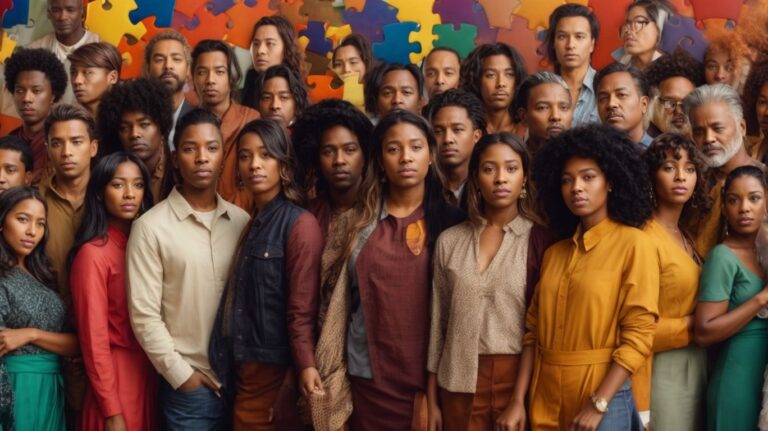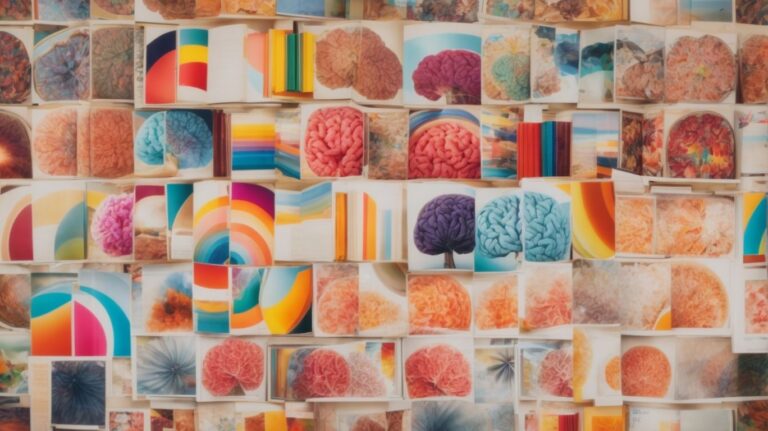Possible selves are a fascinating concept in psychology that explore the different versions of ourselves that we envision for the future. From defining what possible selves are to understanding how they are formed, this article delves into the various aspects of this intriguing concept.
Discover the importance of possible selves in motivation, self-esteem, and coping mechanisms, as well as how they can influence our behavior, decision-making, and risk-taking tendencies.
Learn about the implications of possible selves in therapy, including self-exploration, goal-setting, and overcoming negative self-perceptions.
Contents
- 1 What Are Possible Selves?
- 2 How Are Possible Selves Formed?
- 3 Why Are Possible Selves Important?
- 4 How Do Possible Selves Affect Behavior?
- 5 What Are the Implications of Possible Selves in Therapy?
- 6 Frequently Asked Questions
- 6.1 What is the concept of possible selves in psychology?
- 6.2 How do possible selves develop?
- 6.3 What is the role of possible selves in motivation?
- 6.4 Can possible selves change over time?
- 6.5 How can exploring possible selves be beneficial in therapy?
- 6.6 Are there any limitations to the concept of possible selves?
What Are Possible Selves?
Possible selves refer to the cognitive representations individuals hold about their potential and envisioned future identities, encompassing both hoped-for selves and feared selves.
These possible selves play a vital role in self-regulation by influencing individuals’ behaviors, goals, and decision-making processes. Hoped-for selves serve as motivational functions, inspiring individuals to strive towards becoming their ideal future self, while feared selves act as a cautionary reminder, prompting individuals to avoid potential negative outcomes.
Understanding one’s possible selves can significantly impact behavior change by tapping into individuals’ aspirations and anxieties, shaping their attitudes and actions towards personal growth and development.
Definition of Possible Selves
Possible selves, as conceptualized by Markus and Nurius, involve the mental constructs individuals form that encompass their self-knowledge and cognitive representations of potential future identities.
These possible selves serve as guiding visions that help individuals navigate their actions and decisions towards becoming the person they strive to be. Self-knowledge plays a crucial role in this process, as individuals draw upon their understanding of themselves, their values, and aspirations to shape these future identities. Cognitive representations influence how individuals perceive the attainability and desirability of these potential selves, shaping their motivation and goal-setting behavior. By envisioning and nurturing diverse possible selves, individuals can engage in self-discovery, growth, and effective planning for their future.
Types of Possible Selves
Possible selves can manifest in various forms, including future selves that individuals aspire to become, self-enhancing possible selves that boost self-esteem, and self-regulatory possible selves that aid in behavior change and self-improvement.
Future selves represent the idealized visions of the future that a person envisions for themselves, providing motivation and direction for their actions. On the other hand, self-enhancing possible selves bolster one’s sense of self-worth by focusing on positive attributes and accomplishments, thereby enhancing self-esteem and confidence. Self-regulatory possible selves, in contrast, serve as internal guides for monitoring and adjusting behavior, playing a crucial role in self-regulation and fostering personal growth.
How Are Possible Selves Formed?
Possible selves are shaped through a dynamic interplay of social comparisons, personal goal setting, and feedback from others, influencing individuals’ perceptions of their potential future identities.
Social comparisons play a significant role in this process, as individuals often evaluate their own traits, abilities, and achievements in relation to those of others, which can either motivate or discourage the pursuit of certain possible selves. Moreover, personal aspirations act as guiding beacons, steering individuals towards envisioned future selves that align with their desired goals and values.
External feedback from peers, mentors, and society at large further shapes possible selves, providing validation, criticism, or new perspectives that can lead individuals to adjust their self-concept and strive towards more attainable or fulfilling future identities.
Social Comparisons
Social comparisons play a pivotal role in the development of possible selves, as individuals gauge their own abilities, traits, and achievements against those of others to shape their future self-conceptions.
By observing the successes and failures of their peers and admired figures, individuals construct a mental image of their ideal self. These comparisons not only provide benchmarks for progress but also serve as a source of motivation and inspiration.
When individuals perceive similarities between themselves and their role models, they are inclined to emulate the behaviors and characteristics that they admire. Conversely, contrasting themselves with others may lead to feelings of inadequacy or fuel the drive to surpass perceived limitations. Therefore, social comparisons have a profound impact on individuals’ aspirations, shaping their goals and self-perceptions.
Personal Goals and Aspirations
Personal goals and aspirations serve as the driving forces behind the creation of possible selves, guiding individuals towards desired future identities and outcomes.
Envisioning oneself with specific achievements and milestones shapes the path towards success and fulfillment. When individuals set ambitious targets, they not only define their aspirations but also establish a roadmap for their future selves.
Ambitions drive people to strive harder, pushing them to unleash their potential and reach heights beyond their current abilities. Aspirations act as beacons, illuminating the way towards the envisioned self, providing motivation and direction amidst challenges and uncertainties.
Feedback from Others
External feedback from peers, mentors, and significant others can significantly impact individuals’ possible selves by validating or challenging their self-perceptions and future identity constructions.
When individuals receive positive feedback from their peers, mentors, or loved ones, it can reinforce their self-beliefs and inspire them to pursue their envisioned paths. On the contrary, criticism or negative comments may lead to self-doubt, causing individuals to reassess their aspirations and consider altering their self-concept. This constant interplay with external opinions can shape one’s self-concept and influence their actions and decisions. It highlights the importance of seeking constructive feedback and engaging in dialogues that foster personal growth and development.
Why Are Possible Selves Important?
Possible selves play a crucial role in motivating individuals, guiding goal-setting behaviors, shaping self-esteem, and facilitating adaptive coping and resilience in the face of challenges.
One of the key aspects of possible selves is their ability to provide a future orientation for individuals. By envisioning themselves in various scenarios, people are able to set specific goals and work towards achieving them. This process not only helps in fostering motivation but also serves as a roadmap for personal development and progress. The concept of possible selves influences individuals’ self-concept by shaping how they perceive themselves and their capabilities, thereby impacting their confidence levels and overall well-being.
Motivation and Goal Setting
Possible selves serve as powerful motivational forces, inspiring individuals to pursue specific goals and aspirations aligned with their envisioned future identities.
Envisioned future selves play a pivotal role in driving purposeful goal-setting behaviors by providing individuals with a clear roadmap of who they aspire to become. This visualization of their future self acts as a guiding light, influencing their decisions, actions, and commitment towards achieving those desired outcomes.
By constantly reflecting on what they want to achieve and who they want to be, individuals can maintain a high level of motivation and focus on their goals. This process not only fuels their determination but also instills a sense of purpose and direction in their journey towards personal growth and success.
Self-Esteem and Self-Concept
Possible selves influence individuals’ self-esteem and self-concept by providing a framework for self-evaluation and comparison with their envisioned future identities.
Possible selves act as cognitive representations that help individuals navigate their self-perception through a lens of what they aspire to become.
This process involves a dynamic interplay between current self-perception and future aspirations, shaping how people evaluate themselves and their progress towards those desired future selves.
By constantly comparing their present self with the ideal self they envision, individuals are driven to strive for personal growth and development to bridge the gap between the two versions of themselves.
Coping and Adaptation
Possible selves contribute to individuals’ coping mechanisms and adaptive strategies, offering a source of resilience and hope during challenging circumstances.
Envisioning positive future identities can serve as a motivating factor, directing individuals towards productive behaviors and guiding them through obstacles, fostering a sense of purpose and determination. When people have a clear vision of their desired selves, they tend to exhibit greater persistence and perseverance in the face of setbacks, drawing strength from their envisioned future successes.
How Do Possible Selves Affect Behavior?
Possible selves exert a profound influence on behavior by guiding self-regulation processes, shaping decision-making strategies, and impacting individuals’ willingness to engage in risk-taking behaviors.
Individuals often use possible selves as a basis for comparison to their current self, which can lead to motivation and goal-setting to attain or avoid certain outcomes. By envisioning themselves in these potential future states, people create a psychological roadmap that influences their daily actions and choices. This process not only affects their short-term behaviors but also plays a role in long-term planning and achievement, as they consider the implications of their decisions on reaching their desired selves. The concept of possible selves serves as a powerful tool in self-regulation, as individuals strive to align their current behaviors with their envisioned future selves, often employing strategies such as cognitive restructuring or behavioral modification.
Self-Regulation
Possible selves contribute to self-regulation by serving as internal standards against which individuals compare and adjust their behaviors to align with their envisioned future identities.
This self-regulation process involves a dynamic interplay between an individual’s current actions and their aspirations for the future. By envisioning their ideal self or possible future selves, people create a roadmap towards achieving personal goals and aspirations. These future self-conceptions act as motivational anchors, guiding individuals to make decisions and engage in behaviors that are in line with their desired outcomes. Such self-regulation mechanisms play a crucial role in shaping behavior patterns and fostering personal growth and development.
Decision Making
Possible selves influence decision-making processes by providing individuals with a framework for evaluating choices based on their alignment with envisioned future identities and goals.
This cognitive phenomenon taps into the idea that people often make decisions in the present that they believe will positively impact their future self-concept. Future self-reflection plays a crucial role in this process, as individuals assess various options by gauging how each aligns with their desired outcomes and potential future selves. For example, someone envisioning themselves as a successful entrepreneur may be more inclined to take risks and pursue business opportunities that align with this future self, thus shaping their decision-making behavior.
Risk-Taking Behavior
Possible selves impact individuals’ willingness to engage in risk-taking behaviors, as perceptions of feared selves and hoped-for selves may either inhibit or encourage taking risks.
When individuals visualize themselves in different future scenarios, they internalize these possible selves, shaping their risk assessments and behaviors. Envisioned future identities serve as powerful drivers, influencing the level of risk propensity an individual exhibits. For instance, if one sees their feared self failing in a risky situation, they might be more risk-averse. Conversely, a strong connection to a hoped-for self succeeding in a risky endeavor could embolden them to take calculated risks. This psychological process highlights how our self-perceptions drive our risk-taking decisions in ambiguous and challenging circumstances.
What Are the Implications of Possible Selves in Therapy?
Possible selves hold significant implications for therapeutic interventions, facilitating self-exploration, goal-setting, and the challenging of negative possible selves to foster psychological growth and well-being.
Therapeutic practices often utilize the concept of possible selves to help individuals envision their desired future selves, thus motivating them towards constructive change. Through self-exploration, clients are encouraged to delve into their aspirations, fears, and the various possible outcomes of their actions. This process enables therapists to understand their clients on a deeper level and tailor interventions to align with their goals and values. Goal-setting techniques play a crucial role in translating these envisioned selves into actionable steps, providing a roadmap for personal development. Interventions targeting negative possible selves involve cognitive restructuring, mindfulness practices, and behavioral experiments aimed at transforming limiting beliefs and fostering a more positive self-concept.”
Self-Exploration and Understanding
Therapeutic approaches utilizing possible selves emphasize self-exploration and understanding, enabling individuals to delve into their envisioned future identities and motivations for change.
This process involves exploring the various potential future versions of oneself, incorporating beliefs, values, and aspirations that may influence one’s behavior and decision-making. By looking into these possible selves, individuals can gain insights into their deepest desires, fears, and long-term goals, fostering a deeper understanding of their own psyche and potential trajectories.
Through the lens of possible selves, therapy facilitates a reflective journey towards aligning current actions and attitudes with the aspirational selves individuals aspire to become, fostering a sense of enablement and agency in shaping their future.
Goal-Setting and Action Planning
In therapy, possible selves guide goal-setting and action planning processes, aiding individuals in aligning their present behaviors with their desired future identities and achievements.
Individuals often visualize their ideal future selves, leveraging this mental construct to set concrete goals and develop action plans that bridge the gap between their current state and envisioned potential. Therapists encourage clients to explore various aspects of their possible selves, such as career achievements, personal relationships, health, and self-improvement, facilitating a deeper understanding of their motivations and aspirations.
By incorporating the concept of possible selves into therapy, clients gain clarity on their values, priorities, and long-term aspirations, leading to enhanced commitment and motivation towards behavioral changes and personal growth. Therapeutic strategies, such as visualization exercises, cognitive restructuring, and mindful reflection, facilitate the integration of possible selves into the goal-setting process, fostering a strong sense of self-efficacy and enablement.
Challenging Negative Possible Selves
Therapeutic interventions target negative possible selves by challenging distorted self-perceptions, fostering cognitive restructuring, and promoting positive self-representations to enhance emotional well-being.
Through cognitive-behavioral techniques, individuals are guided to identify and modify irrational beliefs that contribute to the formation of negative possible selves. By replacing these maladaptive thought patterns with more adaptive and realistic perspectives, therapy encourages a shift towards self-compassion and self-acceptance, paving the way for improved mental health outcomes.
Frequently Asked Questions
What is the concept of possible selves in psychology?
Possible selves refers to an individual’s perceptions and expectations about their future self, including their goals, aspirations, and beliefs about who they may become.
How do possible selves develop?
Possible selves develop through a combination of personal experiences, cultural influences, and societal expectations. They are shaped by our past experiences and future goals.
What is the role of possible selves in motivation?
Possible selves play a crucial role in motivation as they act as a source of inspiration and drive for individuals to achieve their desired future self. They can also serve as a source of disappointment or motivation to improve.
Can possible selves change over time?
Yes, possible selves are fluid and can change over time as individuals experience new things and their goals and priorities shift. They can also be influenced by external factors such as relationships and life events.
How can exploring possible selves be beneficial in therapy?
Exploring possible selves in therapy can help individuals gain insight into their values, beliefs, and goals, and identify any discrepancies between their current and desired self. This can aid in setting realistic and meaningful goals for personal growth.
Are there any limitations to the concept of possible selves?
Possible selves are not always a reliable predictor of future behavior as they are based on perceptions and expectations, which may not align with reality. Additionally, they can be influenced by societal pressures and may not reflect an individual’s true desires and values.




